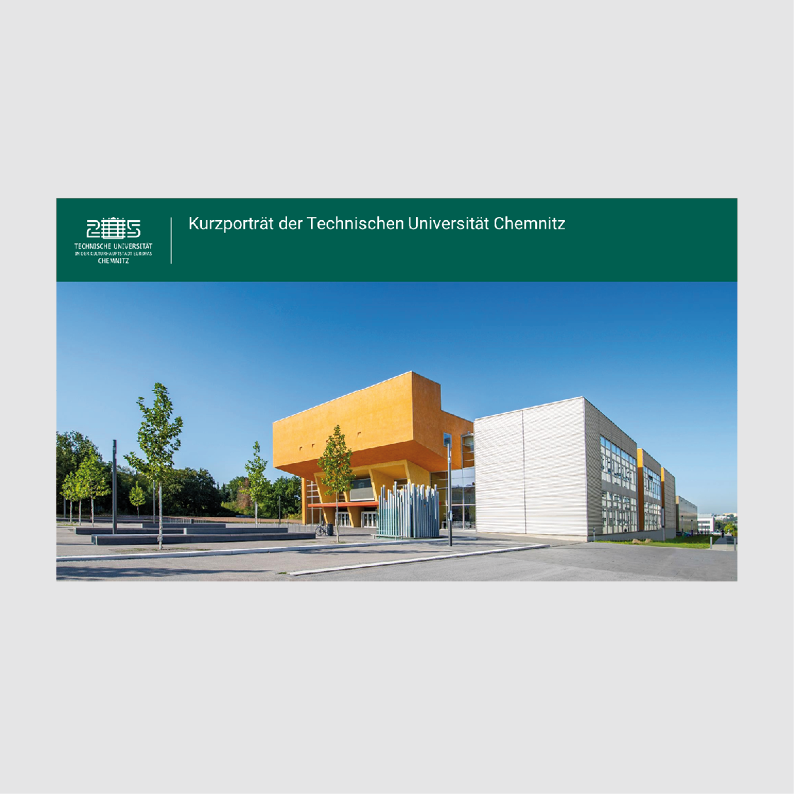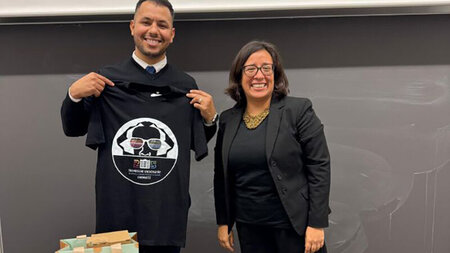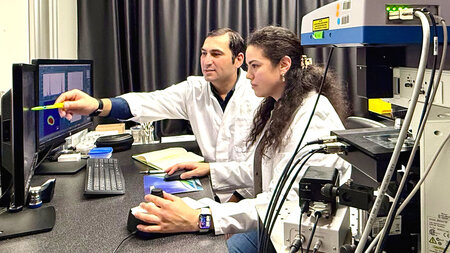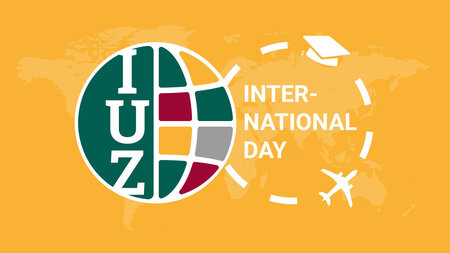Excellent and unique in multiple ways
Chemnitz University of Technology is a cosmopolitan university with strong and intensive networks on the regional, national and international level. With around 8.300 students from 94 countries and about 2.400 staff members it is the third-largest university in Saxony. With regard to the share of international students, Chemnitz University of Technology ranges on the top positions among the public universities Germany-wide. Chemnitz, the European Capital of Culture 2025, belongs, according to a current survey of the research institute Prognos, to the ten most livable cities in Germany and is thus leader in terms of quality of life. In addition, the city also may dispose on a high share of highly-qualified employees. This is also due to the university as Chemnitz University of Technology is the intellectual heart of the city. It has developed to an internationally visible research hub for future value chain processes and sustainable future reliability.
Uniqueness is generated at the interfaces of academic disciplines
Chemnitz University of Technology brings together the core of a university of technology in engineering sciences, mathematics and natural sciences with a wide range of humanities, social sciences and economics. At their interfaces, future-oriented research projects and unique offers for studies are generated. Among those count i.a. Sensors and Cognitive Psychology, Computer Science for Humanities and Social Sciences as well as the degree program “STEM: Mathematics, Computer Science and Natural Sciences with applications in engineering”. In total, the university offers 97 degree programs. One of the particular brands is their highly trans-disciplinary shape. This applies as well for the additional 15 part-time distance and further training degree programs.
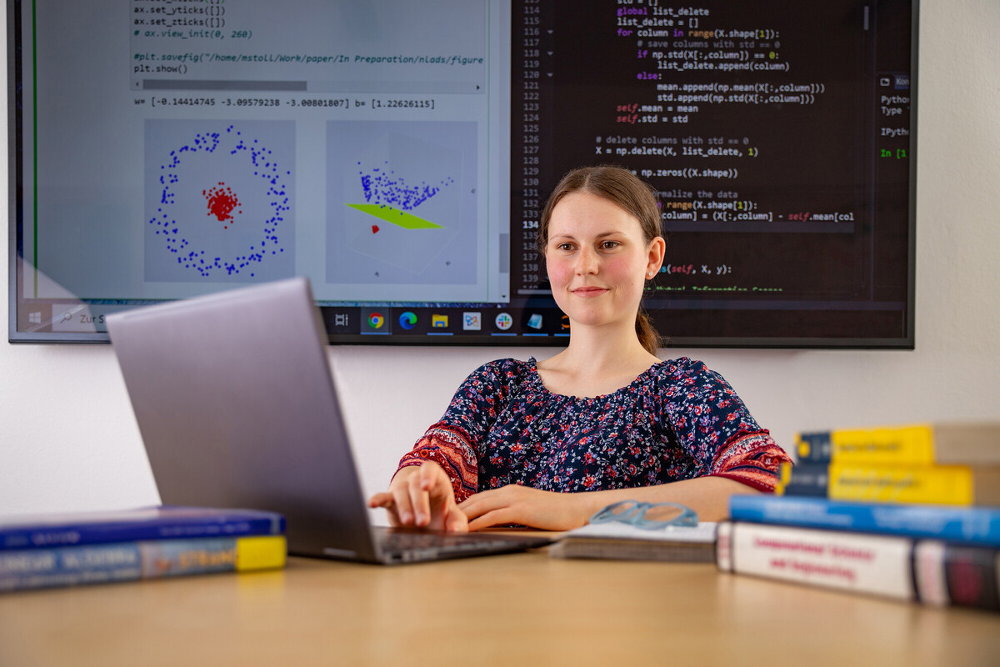
„Teaching Guideline“ provides the framework for successful studies
Chemnitz University of Technology considers excellent teaching as essential breeding ground for a vivid scientific enhancement of the research landscape as well as for the transfer of new themes, discoveries and methods in economy and society. By its “Teaching Guideline”, the university provides the framework necessary for that. Thus, lecturers and students jointly shape the conditions for teaching and studying at Chemnitz University of Technology in the context of cosmopolitanism and regionalism. In that relation, the enhancement of the offers for studies is regularly promoted by the student survey “TUCpanel” as well as by accreditation procedures. In that way, crucial factors for successful studies are determined which contributes in the end to the objective that more graduates may complete their studies at the university in the standard period of time. In addition, each degree program, which has successfully completed the management system for successful studies of Chemnitz University of Technology, is awarded the coveted quality label of the Accreditation Council Foundation. Thus, the graduates as well as their prospective employers are assured that the studies at Chemnitz University of Technology are complying with high demands on quality. This is proven by top rankings in the online assessment portal StudyCheck.de: Within the ranking “Most popular universities 2025”, Chemnitz University of Technology reached the pole position and within the “Digital Readiness Live Ranking” among the public universities (as of: 23.01.2025), it acquired a top placement.
Open Spaces for shaping the “European Capital of Culture 2025”
Chemnitz University of Technology is an important incubator, employer as well as powerful hub for the region and beyond. Thus, the university has supported the successful application of the City of Chemnitz for getting the title “European Capital of Culture 2025” in a varied and active manner, for instance. Those, who currently study at Chemnitz, have the opportunity to actively participate in shaping the Capital of Culture – f.e. within projects supported by the university. Open Spaces for implementing own ideas are available at Chemnitz and the university in varied manners.
Unique research profile through all faculties
Chemnitz University of Technology has targeted the objective to contribute as innovation incubator and international player to meeting priority prospective challenges and to developing sustainable solutions with societal benefit by highly trans-disciplinary approaches. Nowadays, Chemnitz University of Technology is characterized by its three key competencies “Materials and Intelligent Systems”, “Resource-efficient Production and Lightweight Engineering” as well as “Humans and Technology”, in which nationally and internationally visible research dealing with topics of fundamental scientific as well as practical relevance is done. This profiling has generated a constellation of competencies through all eight faculties, which is unique in Germany.
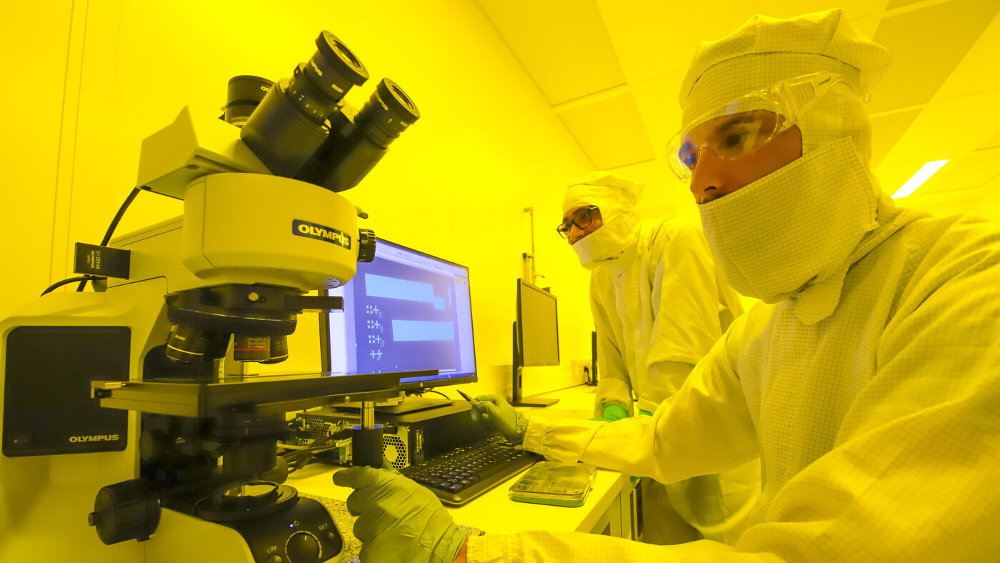
From high-performance materials to intelligent systems
Within the key competency „Materials and Intelligent Systems”, innovative materials and material systems as well as new integration technologies are explored and developed, for automobile production, for sustainable energy technologies as well as for medical engineering, for instance. The focus is set on particular on the functional enhancement by intelligent systems. The “Center for Materials, Architecture and Integration of Nanomembranes“ (MAIN), which is unique in Europe, serves for instance as important incubator on the area of nanoelectronics. Its outstanding research particularly in the field of nanomembrane-based materials – one of the most cutting-edge fields on the area of micro- and nanotechnologies – are highly recognized globally. The “Hyperpolarization of Molecular Systems“ are in the main focus of the collaborative research center established by the German Research Foundation (DFG), in which scholars of the University of Leipzig, of Chemnitz University of Technology as well as extramural research partners are involved. In that way, fundamental basics for further enhancement of molecular diagnostics in medicine shall be elaborated. In addition, three DFG-researchers groups were established with Chemnitz University of Technology as lead partner exploring nuclear thin carbon layers such as graphs, printed organic solar cells as well as solutions for the enhancement of energy efficiency of heat pumps and cooling units.
From renewable energies to merging of technologies
Regarding research in the field of its key competency “Resource-efficient Production and Lightweight Engineering”, Chemnitz University of Technology takes a leading position as well. This key competency is particularly characterized by the work of the research cluster MERGE. This central institution of Chemnitz University of Technology is for example involved in the establishment of the trilateral research campus for global warming gas-neutral closed-loop economy “Green Circular Economy” (CircEcon) located in the industrial estate Schwarze Pumpe near Spremberg, which is supposed to explore and develop new approaches for highly-efficient circular and bio-economy by pilot lines and test facilities. Up to the end of 2026, the Federal State and the Free State of Saxony invest around 108 million Euro in that project. Particularly in exploring “green” carbon fibers and in the development of an added value chain for carbon materials, Chemnitz University of Technology is expected to take a globally leading position. For the establishment and enlargement of the “Carbon LabFactory” as branch site of Chemnitz University of Technology at Boxberg/Upper Lusatia, Chemnitz University of Technology receives additionally around 66 million Euro of Federal State and State funding. The most recent collaborative research center/ transregio of Chemnitz University of Technology deals with the topic of “Intelligent Production Technologies for Plastic Lightweight Structures with Stress-dedicized 3D-Gradation of the Strengthening Architecture”. In addition to the three applying universities Chemnitz University of Technology, Dresden University of Technology and RWTH Aachen, also Vienna University of Technology as well as the Fraunhofer Institute for Machine Tools and Forming Technology are involved. The funding amounts 16.4 million Euro for the first period of three years and nine months. Within the project, innovative production technologies for lightweight structures are developed, which are resource-efficient, sustainable but also high-performing at the same time. Significantly contribute to the energy transition will also from now on the “Research Platform Cooling and Energy Technology” (KETEC) at Reichenbach in the Vogtland region by exploring new refrigerants and storage materials as well as developing new technological solutions. The establishment of KETEC is funded by the Federal Ministry for Education and Research (BMBF) with 15 million Euro. This also contributes to the project to establish a competence center as branch site of Chemnitz University of Technology at Reichenbach. The key competency “Resource-efficient Production and Lightweight Engineering” is furthermore strengthened by an additional DFG-researchers group focusing on the exploration of efficient ways for metal manufacturing.
Interaction between humans and technological systems
Chemnitz University of Technology is also characterized by trans-disciplinary collaboration in its key competency “Humans and Technology”. Main topics of such collaborations are processed in the Research Center for Humans and Technology (MeTech). This faculty-overarching research center explores the crucial and future-oriented significance of the human factor interacting with the technological factor. It is based on the Center for Sensors and Cognition founded at Chemnitz University of Technology and characterized by a range of research collaborations and projects. By its expertise on the field “Human-Machine-Interaction and Cognitive Systems, the Research Center MeTech contributes to the Research and Innovation Network Chemnitz-Ilmenau-Magdeburg (CHIM), in which in addition to Chemnitz University of Technology also Ilmenau University of Technology and the Otto-von-Guericke-University Magdeburg are involved.
Dedicated to junior scientists
The promotion of junior scientists counts among the focus points of the work of Chemnitz University of Technology. With the Center for Junior Scientists there is a central unit for this purpose. The focus points of its work range from assistance within the doctoral and postdoctoral period up to further training, consulting and networking opportunities for junior scientists. In addition, Chemnitz University of Technology provides outstanding promotion and career opportunities by junior researchers groups. Currently, junior scientists work in four ESF PLUS-junior researchers groups funded by the European Social Fund and the Free State of Saxony. They deal i.a. with knowledge-based process modeling for flexible manufacturing, with the control of hydrogen fuel cells, with the development of a sustainable electricity grid as well as with innovative bio-based fiber-plastic composite materials and the preform-manufacturing processes relevant for their production.
Chemnitz University of Technology – the transfer-oriented start-up university
A promising way for Chemnitz University of Technology is also its increasing networking with companies and research institution in Chemnitz region. Jointly with extramural research institutions and affiliated institutes of the university, with the City Administration as well as partners from the economic sector, Chemnitz University of Technology creates optimal conditions linking together practice-oriented teaching with fundamental and application-oriented research. Good conditions for jumping from the lecture hall into autonomy are offered by the start-up-network SAXEED at Chemnitz University of Technology and three other universities in Saxony. Since 2006, it supported around 1.867 start-up-projects from which more than 580 companies derived – at Chemnitz University of Technology alone, there are 911 start-up-projects and 267 spin-offs (as of: 12.06.2025). In addition, the Development Bank of Saxony as funding bank of the Free State of Saxony and Chemnitz University of Technology have initiated a “TUClab” for the promotion of innovative spin-offs in the key competency areas of the university in order to enhance the assistance for founders during and after the start-up. All this contributes to the reputation of Chemnitz University of Technology as one of the best start-up-universities in Germany. According to the “Start-up survey of the Donors’ Association 2025”, it reached rank 4 among the medium-sized universities. Particularly its activities in the fields of start-up assistance and promotion designed by the Center for Science and Technology Transfer in charge at Chemnitz University of Technology were honored there.
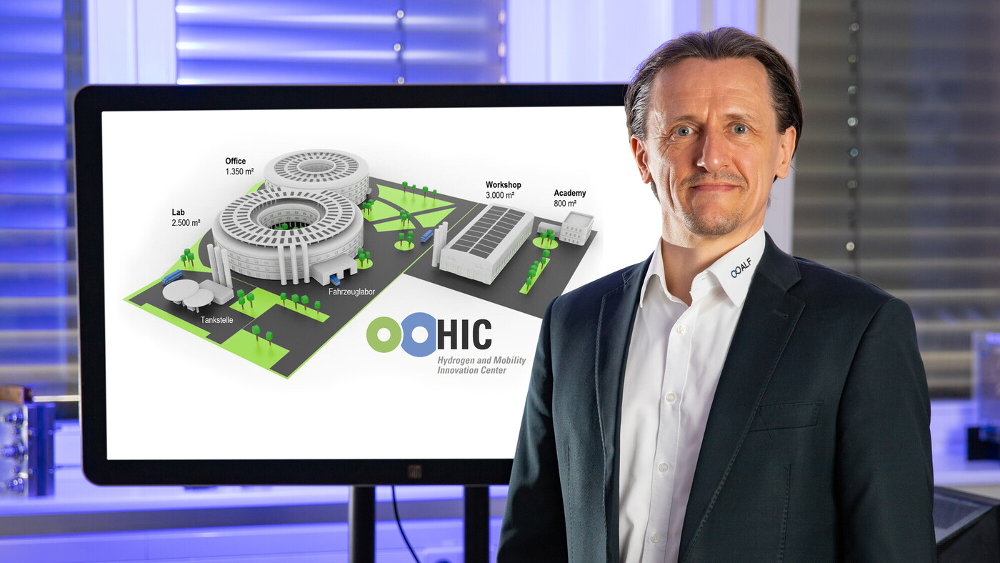
Enhancement through networking
Networking is highly valued by Chemnitz University of Technology. Among the outstanding networking projects of the university count for example the Hydrogen Technology Cluster HZwo and the “Smart Rail Connectivity Campus (SRCC)”. The objective of the innovation cluster “HZwo” consists on establishing an added value network for hydrogen fuel cell technology. In this context, a “Hydrogen Innovation Center (HIC)“ is being constructed on the Southern Technology Campus with Chemnitz University in a leading role. It is funded by the Federal State and the Free State of Saxony by around 87 million Euro. It is supposed to serve for bringing the outstanding research and its transfer on the field of hydrogen technology and mobility on a new level. The SRCC, funded within the program „WIR! – Transition through innovation in the region” of the Federal Ministry for Education and Research, is a center for applied exploration, development and testing of technologies for the enhancement and sustainable design of the rail sector and to connect it with other transport carriers, which is unique in Europe. In this context, a new research campus is being established as branch site of Chemnitz University of Technology at the city Annaberg-Buchholz.
Real internationality at cosmopolitan university
With a share of 33 percent international students, a number of international scholars as well as cooperation with 120 universities on all continents, Chemnitz is one of the most internationalized universities in Germany. It follows this way since many years with increasing intensity and on a professional level, which is confirmed by the label “HRK Re-Audit Internationalization of Universities”. In the upcoming years, the university further enhances its European dimension and serves as an incubator for challenges particularly in cross-border regions. For this purpose, Chemnitz University of Technology collaborates as coordinating institution of the European University Alliance “Across – The European University for Cross-Border Knowledge Sharing” with nine partner universities in order to implement the shared vision of a trans-national European University. Among other, joint degree programs as well as physical and digital mobility offers for students and lecturers of the universities involved are designed. The European Union fund this university alliance by 14.4 million Euro until 2028.
Award for diversity and family-consciousness as well as solidarity within the TUC-family
Chemnitz University of Technology is a community considering diversity as fundamental component and value, which is of crucial importance for all areas of life at the university and which enriches the university. This is emphasized i.a. by the certificate “Shaping Diversity” of the Donors’ Association for German Science. This certificate confirms that Chemnitz University of Technology considers the diversity of its students and staff member as a chance and that it has found ways to make use of this potential for the organizational enhancement of the university. In addition, Chemnitz University of Technology was awarded the quality label “Family-friendly University” several times during the last years for specifically honoring its long-lasting, sustainable, family- and life phase-conscient human resources policy. Furthermore, the TUC-family engages again and again in the public for tolerance, diversity, cosmopolitanism, democracy, antidiscrimination and peaceful coexistence. This is highlighted by the highly-visible campaign ZUSAMMENSTEHEN #TUCgether.
Image Clips
TUC Image Clip
- Image Clip of Chemnitz University of Technology | german | .mp4
- Image Clip of Chemnitz University of Technology | english | .mp4
Image Film of the City of Chemnitz
General Presentation of the Chemnitz University of Technology
This presentation from the TU Chemnitz includes general information about the university and its activities. It may be used as the basis for further presentations or on its own.
Presentation
Accessible PDF Documents: Recommendations for formatting in PowerPoint (in German)
